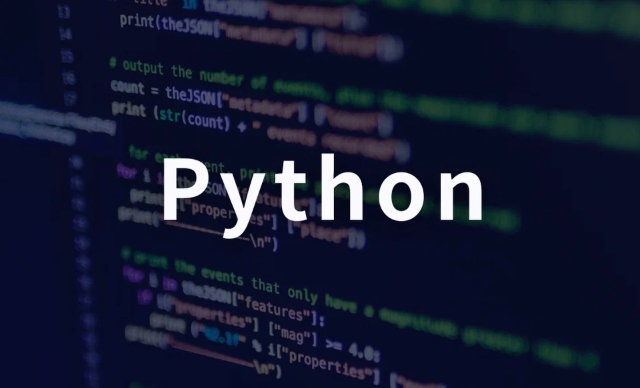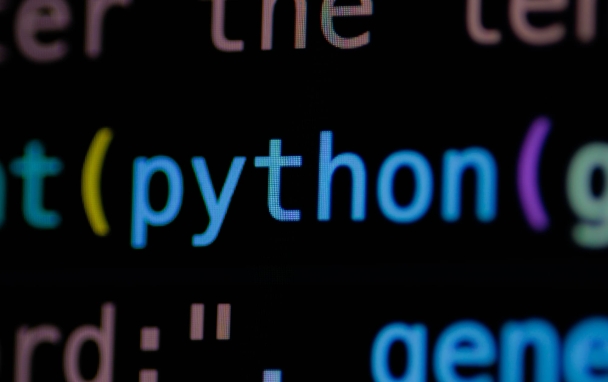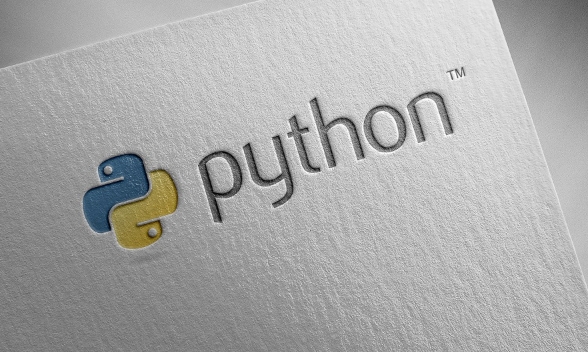 Backend Development
Backend Development
 Python Tutorial
Python Tutorial
 Data Visualization Techniques Using Python Matplotlib/Seaborn
Data Visualization Techniques Using Python Matplotlib/Seaborn
Data Visualization Techniques Using Python Matplotlib/Seaborn
Jul 07, 2025 am 02:57 AMMaster the key techniques for data visualization, Matplotlib and Seaborn can present data efficiently. 1. Select the appropriate chart type: line chart displays trends, bar chart/bar chart is used for classification comparison, scatter chart observes variable relationships, heat map displays correlation, box chart view distribution and outliers, Seaborn high-level interface automatically matches the types. 2. Improve readability: add clear labels, adjust font size, reasonable color matching, set legend position, and use grid lines to assist in reading. 3. Combining the advantages of both: use Seaborn to quickly draw, Matplotlib adjusts details such as style, layout, export HD pictures and avoid overlap. 4. Pay attention to common problems: manually set the axis range, solve Chinese garbled code, control the drawing order, and avoid excessive beautification and interference with information transmission.

It is actually not difficult to use Python's Matplotlib and Seaborn to visualize data, but to make clear and persuasive charts, you still have to master some skills. These two libraries are powerful, but how to choose and use them lies in understanding your data and the information you want to express.

1. Select the appropriate chart type
Not all charts are suitable for all data. For example, if you want to show trends, a line chart is the most suitable; if you want to look at the distribution, a histogram or box chart is more suitable; and when comparing classified data, a histogram or bar chart is more intuitive.

- Line chart: data suitable for time series or continuous changes
- Bar chart/bar chart: suitable for classification comparison
- Scatter plot: used to observe the relationship between two variables
- Thermal graph: Shows the correlation or density of matrix data
- Box chart: Look at the distribution and outliers
Seaborn is well encapsulated in this regard. High-level interfaces such as sns.catplot() or sns.relplot() can automatically help you match appropriate chart types.
2. A few tips to improve readability
No matter how beautiful the chart is, it is useless if others can't understand it. To improve readability, you can start from these aspects:

- Add tags : write the x-axis, y-axis, and titles clearly, don't be afraid of being too verbose
- Adjust the font size : The default font size is too small, especially in reports or PPTs.
- Reasonable color matching : avoid using too many colors, you can use Seaborn's built-in color palette (such as
sns.color_palette("Set2")) - The legend is suitable : Sometimes the legend blocks the data, you can try
loc='upper right'or put it outside - Grid line assisted reading : Adding
plt.grid(True)can make the values ??easier to align
For example, if you draw a bar chart and find that the color distinction between different categories is not obvious enough, changing a color palette can improve a lot.
3. Combine Matplotlib and Seaborn to maximize results
Although Seaborn is based on Matplotlib, the two work better together. You can use Seaborn to quickly generate charts and then use Matplotlib to adjust details.
for example:
- Use
sns.set_style()to set the overall style - Use
plt.subplots()to control multiple subgraph layouts - Use
plt.tight_layout()to avoid overlapping tags - Export high-definition pictures with
fig.savefig('output.png')
A small trick is that Seaborn's default DPI is not high. It is recommended to add the parameter dpi=300 when saving pictures, so that it is clearer when printing or inserting documents.
4. Pay attention to common pitfalls
- The axis range is not suitable : Sometimes the default axis range will enlarge or narrow the difference. Remember to manually set it with
plt.xlim()andplt.ylim() - Chinese garbled code : Matplotlib does not support Chinese by default, you can use
plt.rcParams['font.sans-serif'] = ['SimHei']to solve it - Drawing order affects vision : If you superimpose multiple graphic elements, pay attention to who draws first and who then draws, which will affect the final display effect.
- Don't over-beautify : The core of the chart is to convey information, not show off skills. Some 3D pictures look cool, but they interfere with the judgment.
Basically that's it. Master the basic chart types and commonly used adjustment methods, and practice them a few times based on actual data, and you will be able to get started soon.
The above is the detailed content of Data Visualization Techniques Using Python Matplotlib/Seaborn. For more information, please follow other related articles on the PHP Chinese website!

Hot AI Tools

Undress AI Tool
Undress images for free

Undresser.AI Undress
AI-powered app for creating realistic nude photos

AI Clothes Remover
Online AI tool for removing clothes from photos.

Clothoff.io
AI clothes remover

Video Face Swap
Swap faces in any video effortlessly with our completely free AI face swap tool!

Hot Article

Hot Tools

Notepad++7.3.1
Easy-to-use and free code editor

SublimeText3 Chinese version
Chinese version, very easy to use

Zend Studio 13.0.1
Powerful PHP integrated development environment

Dreamweaver CS6
Visual web development tools

SublimeText3 Mac version
God-level code editing software (SublimeText3)
 Polymorphism in python classes
Jul 05, 2025 am 02:58 AM
Polymorphism in python classes
Jul 05, 2025 am 02:58 AM
Polymorphism is a core concept in Python object-oriented programming, referring to "one interface, multiple implementations", allowing for unified processing of different types of objects. 1. Polymorphism is implemented through method rewriting. Subclasses can redefine parent class methods. For example, the spoke() method of Animal class has different implementations in Dog and Cat subclasses. 2. The practical uses of polymorphism include simplifying the code structure and enhancing scalability, such as calling the draw() method uniformly in the graphical drawing program, or handling the common behavior of different characters in game development. 3. Python implementation polymorphism needs to satisfy: the parent class defines a method, and the child class overrides the method, but does not require inheritance of the same parent class. As long as the object implements the same method, this is called the "duck type". 4. Things to note include the maintenance
 Explain Python generators and iterators.
Jul 05, 2025 am 02:55 AM
Explain Python generators and iterators.
Jul 05, 2025 am 02:55 AM
Iterators are objects that implement __iter__() and __next__() methods. The generator is a simplified version of iterators, which automatically implement these methods through the yield keyword. 1. The iterator returns an element every time he calls next() and throws a StopIteration exception when there are no more elements. 2. The generator uses function definition to generate data on demand, saving memory and supporting infinite sequences. 3. Use iterators when processing existing sets, use a generator when dynamically generating big data or lazy evaluation, such as loading line by line when reading large files. Note: Iterable objects such as lists are not iterators. They need to be recreated after the iterator reaches its end, and the generator can only traverse it once.
 How to handle API authentication in Python
Jul 13, 2025 am 02:22 AM
How to handle API authentication in Python
Jul 13, 2025 am 02:22 AM
The key to dealing with API authentication is to understand and use the authentication method correctly. 1. APIKey is the simplest authentication method, usually placed in the request header or URL parameters; 2. BasicAuth uses username and password for Base64 encoding transmission, which is suitable for internal systems; 3. OAuth2 needs to obtain the token first through client_id and client_secret, and then bring the BearerToken in the request header; 4. In order to deal with the token expiration, the token management class can be encapsulated and automatically refreshed the token; in short, selecting the appropriate method according to the document and safely storing the key information is the key.
 How to iterate over two lists at once Python
Jul 09, 2025 am 01:13 AM
How to iterate over two lists at once Python
Jul 09, 2025 am 01:13 AM
A common method to traverse two lists simultaneously in Python is to use the zip() function, which will pair multiple lists in order and be the shortest; if the list length is inconsistent, you can use itertools.zip_longest() to be the longest and fill in the missing values; combined with enumerate(), you can get the index at the same time. 1.zip() is concise and practical, suitable for paired data iteration; 2.zip_longest() can fill in the default value when dealing with inconsistent lengths; 3.enumerate(zip()) can obtain indexes during traversal, meeting the needs of a variety of complex scenarios.
 What are python iterators?
Jul 08, 2025 am 02:56 AM
What are python iterators?
Jul 08, 2025 am 02:56 AM
InPython,iteratorsareobjectsthatallowloopingthroughcollectionsbyimplementing__iter__()and__next__().1)Iteratorsworkviatheiteratorprotocol,using__iter__()toreturntheiteratorand__next__()toretrievethenextitemuntilStopIterationisraised.2)Aniterable(like
 Explain Python assertions.
Jul 07, 2025 am 12:14 AM
Explain Python assertions.
Jul 07, 2025 am 12:14 AM
Assert is an assertion tool used in Python for debugging, and throws an AssertionError when the condition is not met. Its syntax is assert condition plus optional error information, which is suitable for internal logic verification such as parameter checking, status confirmation, etc., but cannot be used for security or user input checking, and should be used in conjunction with clear prompt information. It is only available for auxiliary debugging in the development stage rather than substituting exception handling.
 What are Python type hints?
Jul 07, 2025 am 02:55 AM
What are Python type hints?
Jul 07, 2025 am 02:55 AM
TypehintsinPythonsolvetheproblemofambiguityandpotentialbugsindynamicallytypedcodebyallowingdeveloperstospecifyexpectedtypes.Theyenhancereadability,enableearlybugdetection,andimprovetoolingsupport.Typehintsareaddedusingacolon(:)forvariablesandparamete
 Python FastAPI tutorial
Jul 12, 2025 am 02:42 AM
Python FastAPI tutorial
Jul 12, 2025 am 02:42 AM
To create modern and efficient APIs using Python, FastAPI is recommended; it is based on standard Python type prompts and can automatically generate documents, with excellent performance. After installing FastAPI and ASGI server uvicorn, you can write interface code. By defining routes, writing processing functions, and returning data, APIs can be quickly built. FastAPI supports a variety of HTTP methods and provides automatically generated SwaggerUI and ReDoc documentation systems. URL parameters can be captured through path definition, while query parameters can be implemented by setting default values ??for function parameters. The rational use of Pydantic models can help improve development efficiency and accuracy.





